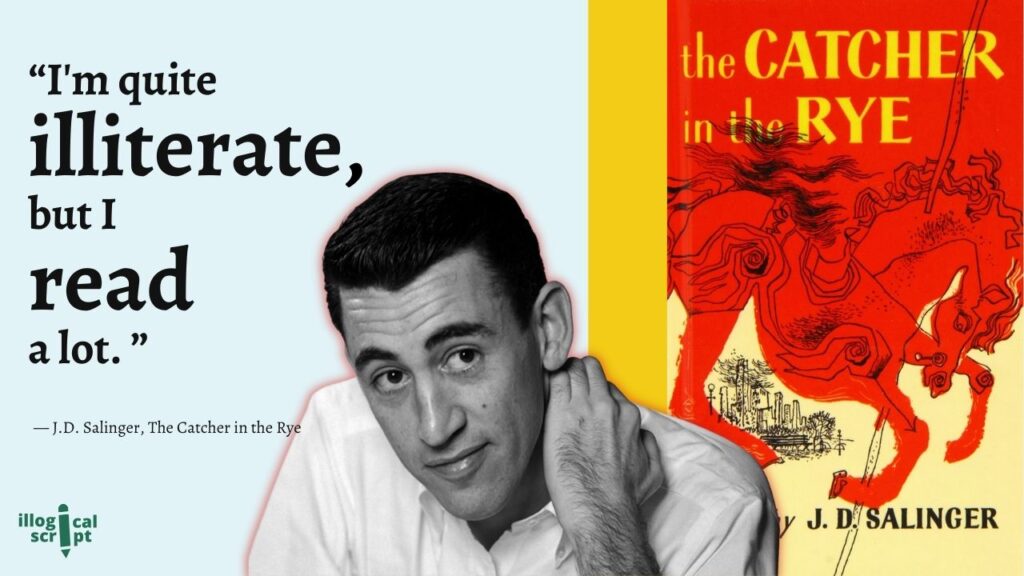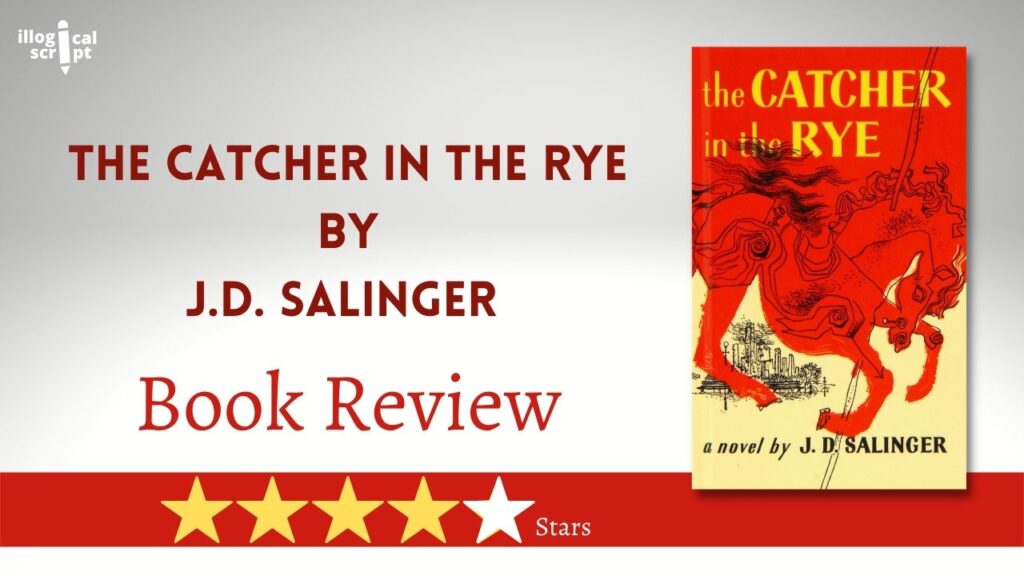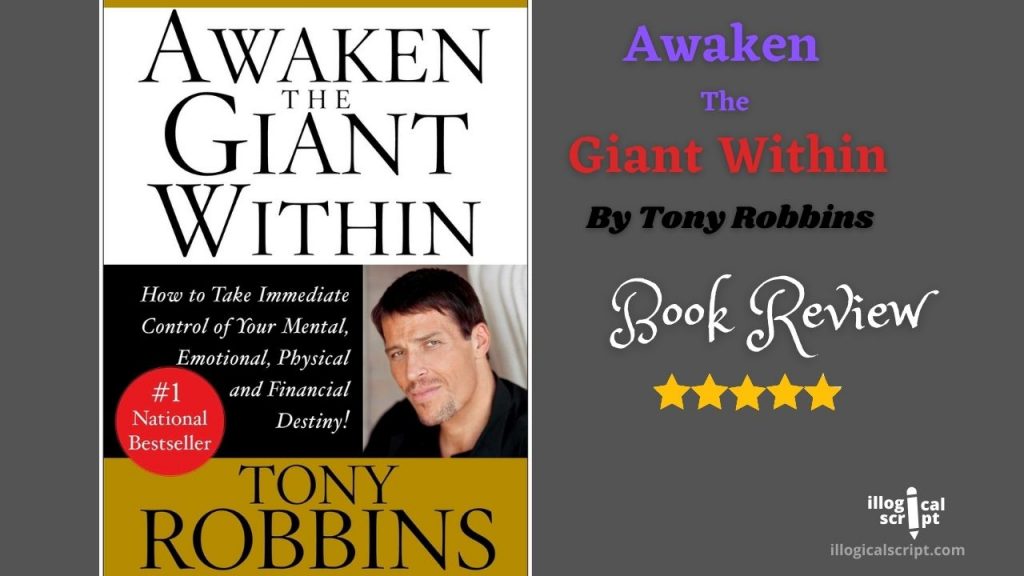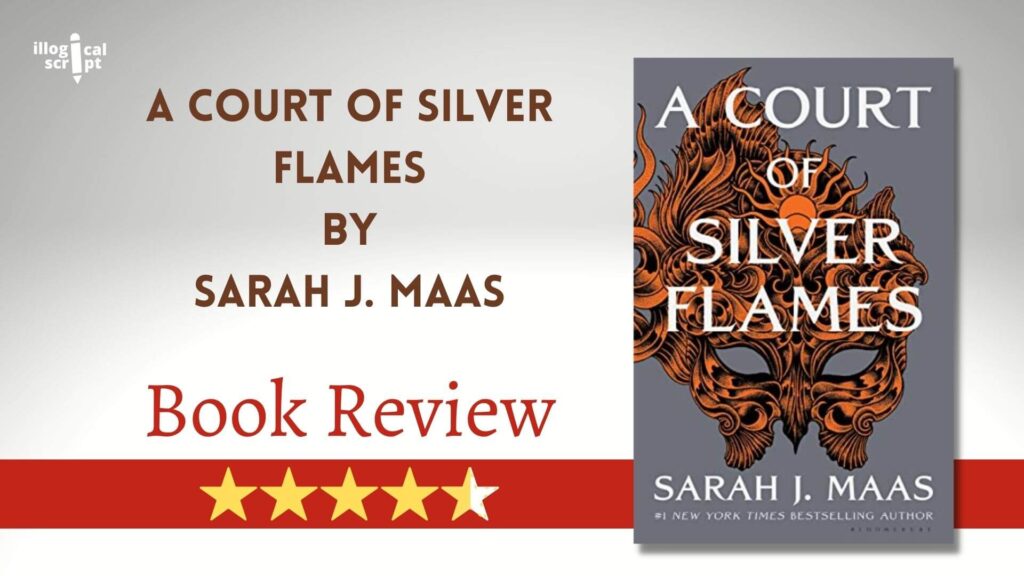As we turn from teenage to adolescence our brains undergo many changes throughout the process and in the process develop their understanding of themselves and the world. So, today I have come with a new book review titled, ‘The Catcher in the Rye by J.D. Salinger‘. This book shows how a young man deals with the world and himself as he is caught between being a child and an adult.
The Catcher in the Rye follows the adventures of a 16-year-old boy after being expelled from a prep school. Despite fighting with his roommate, the boy leaves school two days early to explore New York. In his search for truth and challenge toward the “phoniness” of the adult world, confused and disappointed, he ends up exhausted and emotionally unstable.
This story explores the angst and alienation that many teenagers experience between a child and an adult. The author describes teenage aggression about growing up and how you want to stay in your comfort zone and avoid all the challenges that adulthood brings you.
We will learn about the translation period and a lot more as we explore the novel. Join me for a closer look at the novel.
The Catcher in the Rye by J.D. Salinger | Book Review

About The Author | Jerome David Salinger
Jerome David Salinger was an American writer who grew up in Manhattan, New York, the US, in 1919. After graduating from Valley Forge in 1936, he attended several colleges, including Columbia University, but did not graduate. When he was a teenager, he started writing. Later he worked for his father’s business in Australia and served in world war 2nd, seeing active duty in some of the famous battles fought in the conflict.
Salinger witnessed first-hand the rise to power of the Nazi regime. After the war, he was hospitalized for depression and post-traumatic stress disorder. After the hospital, Salinger began work on The Catcher in the Rye.
Before its publication, Salinger published many short stories in story magazines. In 1948, his famous story “A Perfect Day for Bananafish” came to light in The New Yorker, which has also published many of his later works, including nine stories. In 1951, Salinger issued his only full-length novel, The Catcher in the Rye, which put him on the national stage and 2010 marked his last year of life.
Book Overview | The Catcher in the Rye by J.D. Salinger
The Catcher in the Rye is an iconic, classic American novel. It is an existential coming-of-age story that deals with the adventure of a likeable opinionated young narrator and themes and symbols that are highly relatable to society and modern life. This book was a best seller and received many positive reviews, including a selection by the Book-of-the-Month Club.
In 2005, it was included on Time Magazine’s list of the 100 best English-language novels written. In 2003, it was listed at number 15 on the BBC’s survey The Big Read, and it was ranked as one of the 100 best English-language novels of the 20th century by its readers.
Written by: J.D. Salinger
Genres: coming-of-age fiction, Realistic fiction
Language: English
Pages: 235 (may differ)
First Published by: Little, Brown and Company on 16th July, 1951
Setting: It takes place in the 1950s; Hagerstown, Pennsylvania at the pencey prep, a private school. It’s December, just before Christmas eve.
Point of View: A plot of The Catcher in the Rye takes place in the first person as Holden serves as both protagonist and narrator, and he also offers his limited biased viewpoints of the events.
Major Themes: It includes protection of innocence, especially for children, the phoniness of the adult world, self-alienation as the purpose of self-protection, childhood and pain fullness of growing up, women and sex, love, lies, wisdom and knowledge.
Major Symbols: The Catcher in the Rye, Allie’s baseball glove, Holden’s red hunting cap, Museum of Natural history, preparatory school life, the ducks in the central park lagoon, Radio City Music Hall, the carousel’s gold ring, the coming-of-age genre.
Main Characters: Holden Caulfield, Mr Antolini, D.B., Phoebe, Allie.
Holden Caulfield: In this novel, the protagonist and narrator is a 16-year-old boy who has been expelled from prep school despite his intelligence and sensitivities. He struggles to find the truth and complains about the phoniness of adulthood. And ends up exhausted and emotionally unstable and shares his struggle against growing up.
What Does The Title “The Catcher in the Rye” Mean? This title represents the novel’s main theme, which is the protection of innocence, mainly in children. “Catcher in the Rye refers to ‘Comin’ Thro the Rye,” a Robert Burns poem, and a symbol for the main character Holden’s desire to protect childhood innocence.
Is “The Catcher in the Rye” based on a true story? It was Salinger’s first published novel and was inspired by his own experiences as a youngster, and many events from Salinger’s early life are reflected in the story.
Book Summary | The Catcher in The Rye by J.D. Salinger
The story is about a 16-year-old boy Holden Caulfield, the narrator and protagonist, who tells the story of his adventure before Christmas eve. Holden was expelled from his third school. His parents are unaware that he has been expelled, so he cannot go home before vacation, and he arrives in New York for about three days, staying in a hotel and not telling his parents that he is back.
The profanities he uses in this book conveys his frustration to the best of his ability. Everybody is affected by them, from his parents his fake teachers to his roommate who scores with girls using sickly-sweet affection. After being tired of adulthood, Holden heads to New York City in the wake of a revolt.
He moves abruptly around New York City, running away from the criminals at Pencey Prep, shooting the bull with strangers in dive hotels, wandering alone round Central Park, getting beaten up by pimps and cut down by one-time girlfriends.
In this book, he describes his interactions with playful middle-aged women, call girls, sisters, offending taxi drivers, and alcohol and drugs. He narrates these events to the readers through flashbacks as he travels through. Holder’s journey of self-discovery and the debauchery of his life, but his sisters help him recover from that.

My Thoughts on The Catcher in The Rye
It is an all-time classic as a story of alienation from the heartless world. The novel gave voice to the word teen angst, but what made it different is that teenage angst was taken seriously for the first time. In many ways, teenagers are considered the most inappropriate generation, where their hormones are out of control. The misunderstanding with society provides them with a sense that this world is uncaring. No one cares about them, which makes novels more instructive.
Many of you may have seen Holden as a symbol of pure, unflattered individuality, as a symbol of young people everywhere who feel oppressed on all sides by pressure to grow up and live their lives according to rules.
You can see where it is going wrong, and you cannot do anything about it because I think all of us have been where he is standing now. And the way he seems to be so careless and indifferent about his self-destructive path, you will notice that there is something so relatable.
Holden uses many inappropriate words in the book that many teenagers use in their daily vocabulary. It may seem not clear at first, but with time, you will come to understand that it is truly a wonderful book. It would provide you with a great chance to understand another person’s opinions and feelings.
In truth, Holden’s Caulfield is just a teenager frightened of growing up. He is on the edge of adulthood, and he is trying his best to conserve his innocence, as well as that of others.
My Ratings on The Book
Final Words
This book is very basic. It moves fairly easily, the language is easy to understand, and the chapters are short. As a result, nearly everyone who reads it ends up identifying with the characters on some level.
I think this is one of the reasons why it is still classic and widely popular since it came out in 1951. It is a book that will affect you differently every time you read it. I think you should check it out and enjoy it.
Don’t forget to checkout some of the mentioned books:




